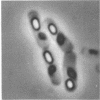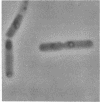Abstract
A general pattern of metabolism was determined for Bacillus thuringiensis grown in a glucose-yeast extract-salts medium. The pattern did not differ significantly from that of B. cereus grown in a similar medium. Acetic acid produced from glucose during exponential growth was further catabolized in the early sporulation phase of growth, at which time the specific activity of aconitate hydratase increased markedly. Fluoroacetate and α-picolinate prevented the removal of accumulated acid, and the resulting low pH inhibited spore and crystal synthesis. Neither crystal-related antigens nor insect toxicity was shown by cells whose crystal synthesis was inhibited in this way. α-Picolinate prevented the normal increase in specific activity of aconitate hydratase without inhibiting exponential growth. It also inhibited aconitate hydratase in vitro, but only if preincubated with the enzyme. α-Picolinate did not inhibit the increase in specific activity of aconitate hydratase or spore and crystal synthesis in a medium buffered near neutrality. Chloramphenicol and actinomycin D inhibited crystal enlargement and sporulation when added to cells in which small crystals had already begun to form. Typical messenger ribonucleic acid-dependent protein synthesis, rather than the type associated with peptide antibiotic synthesis, is thus indicated for the synthesis of crystal peptide subunits.
Full text
PDF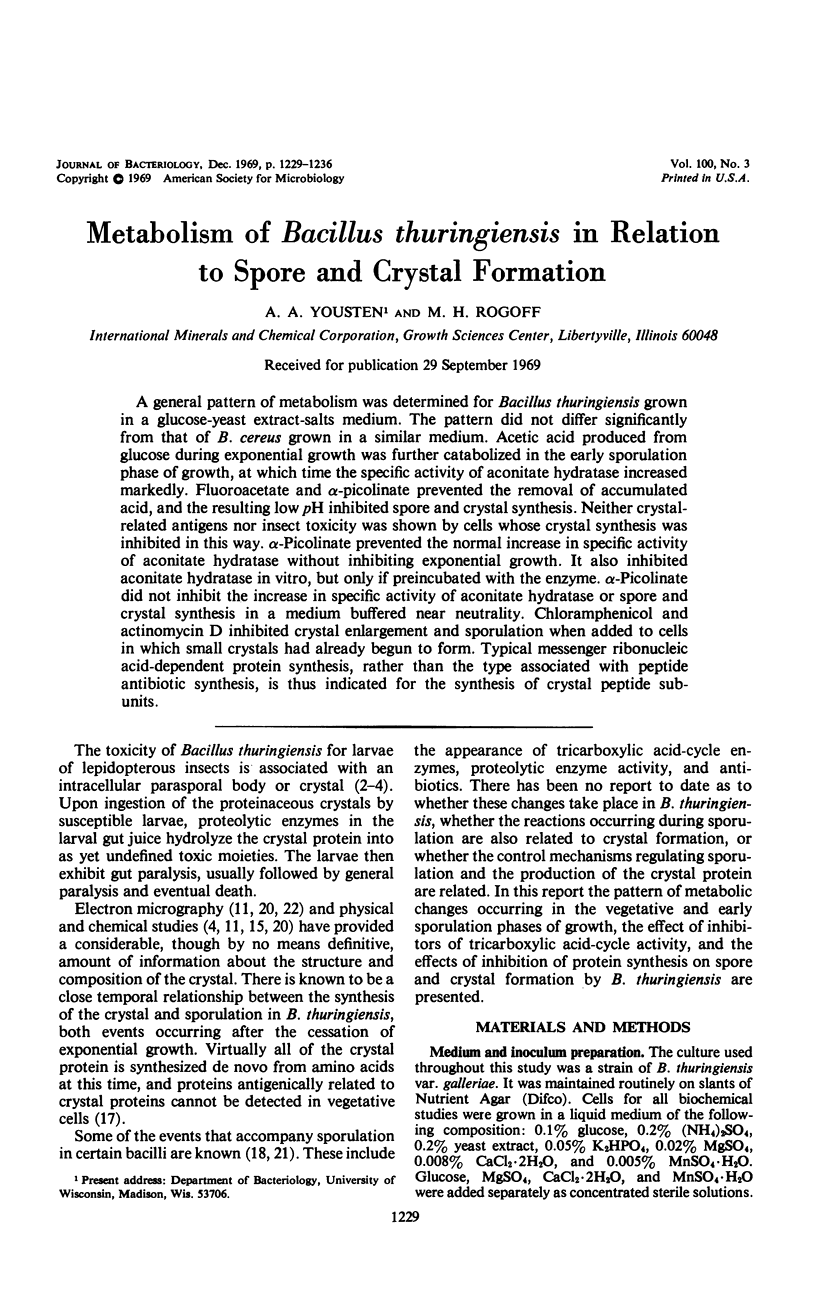
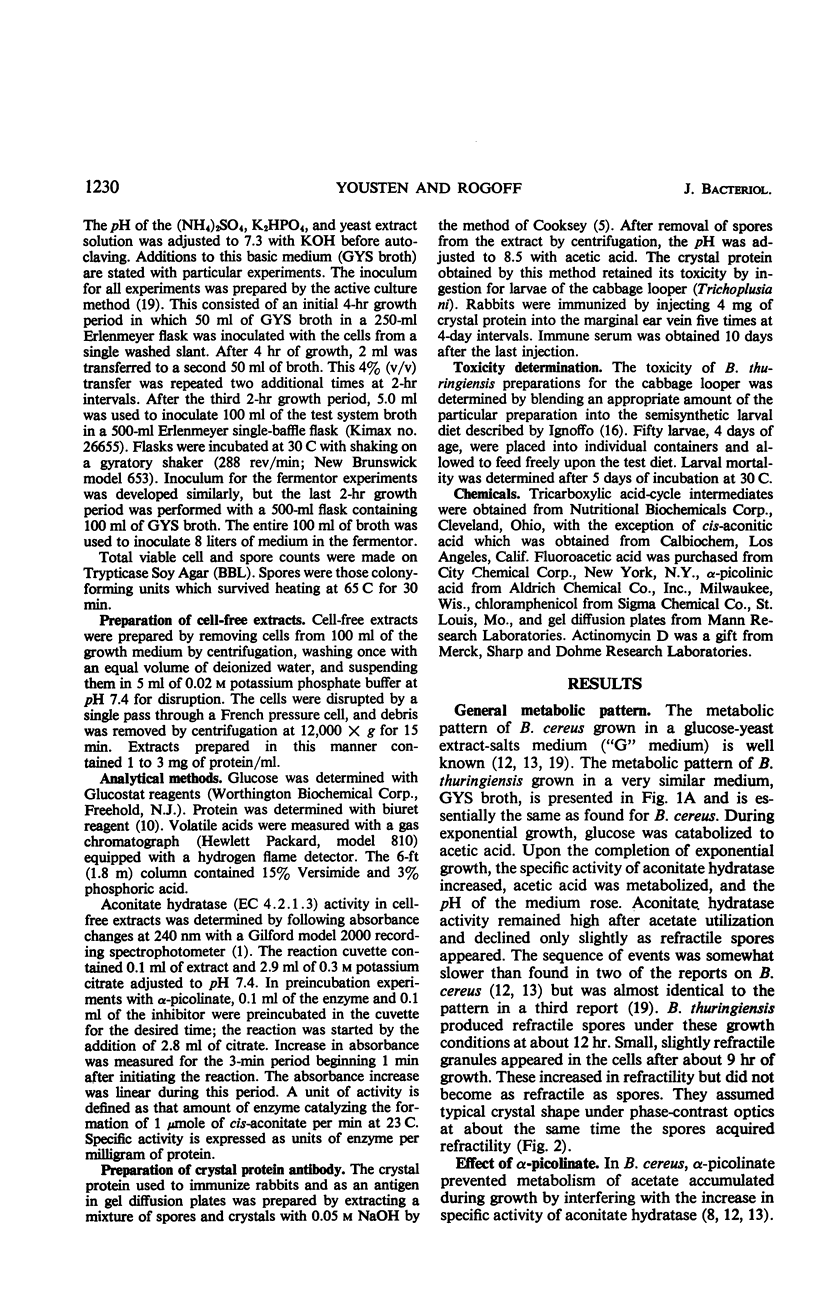
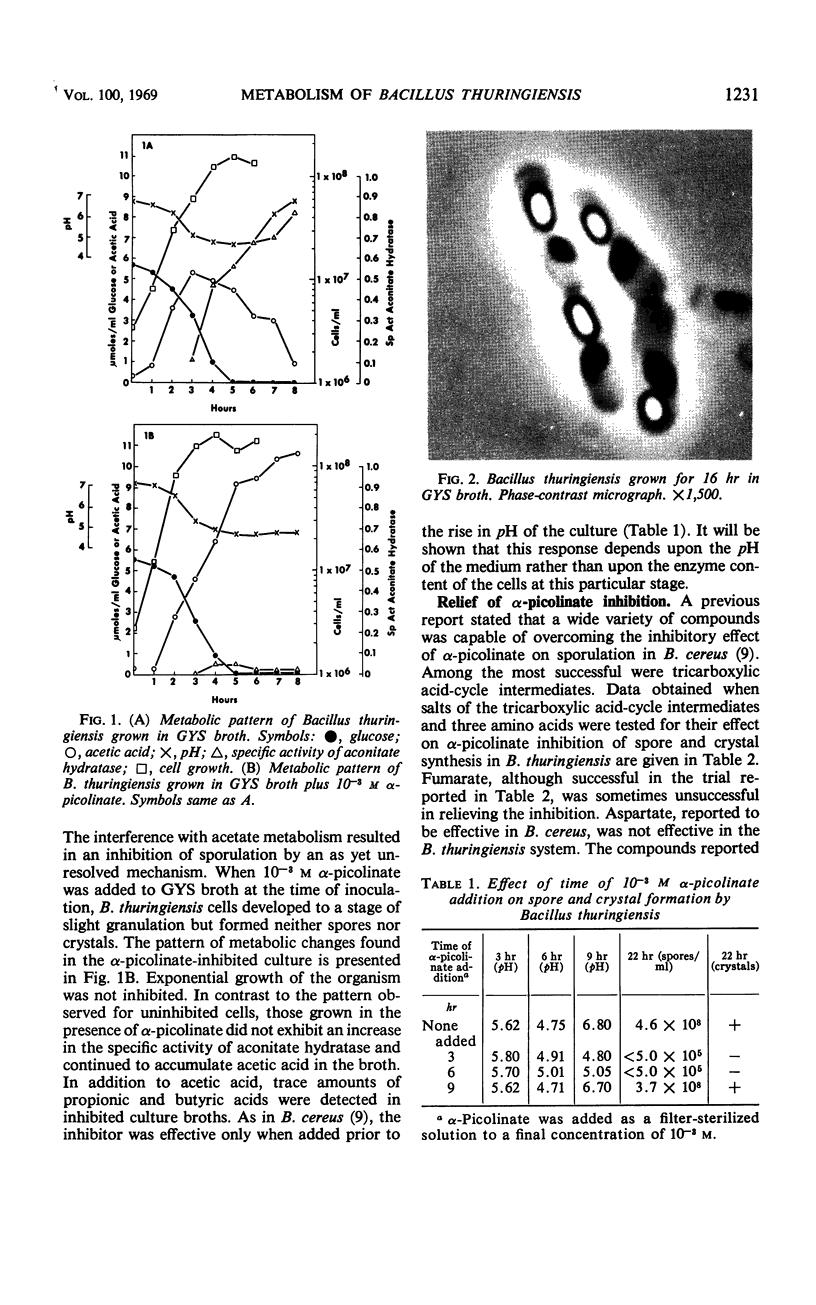
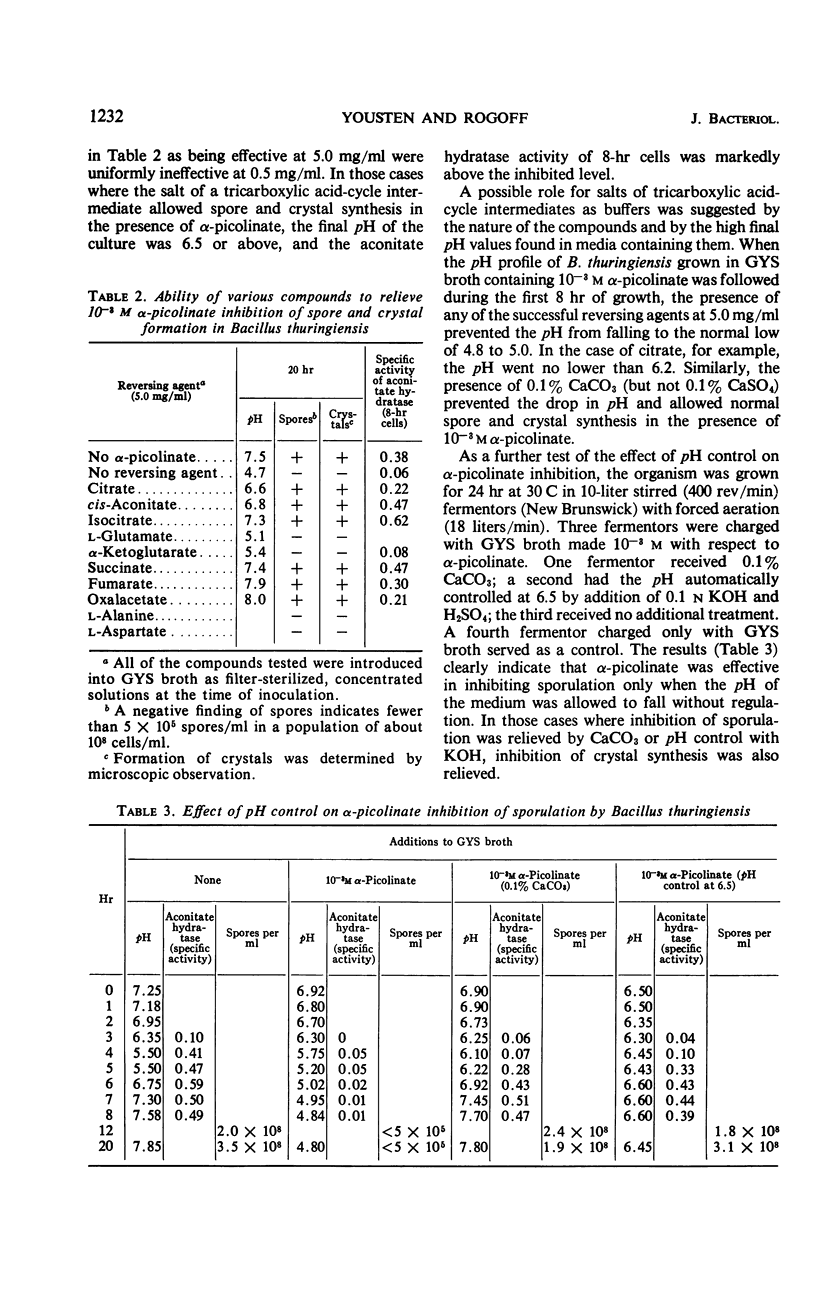
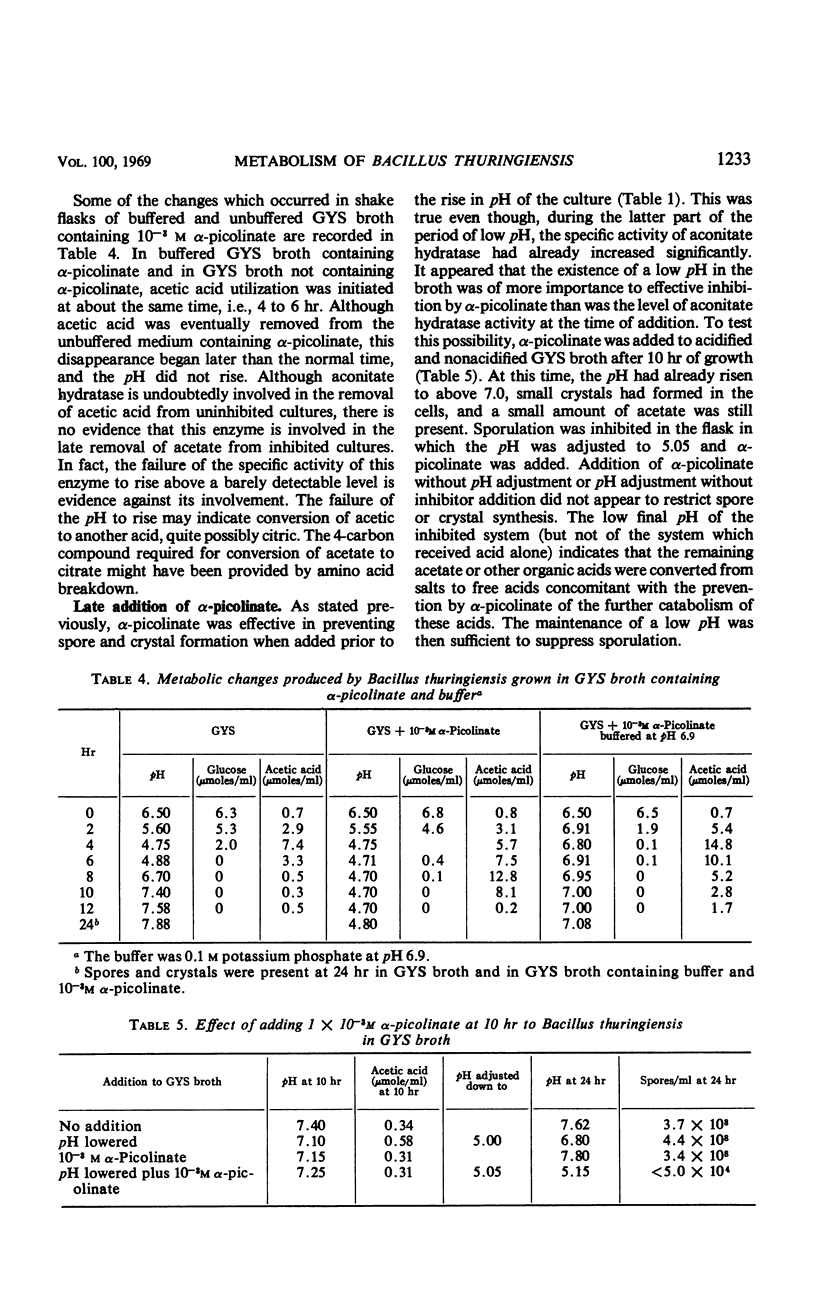
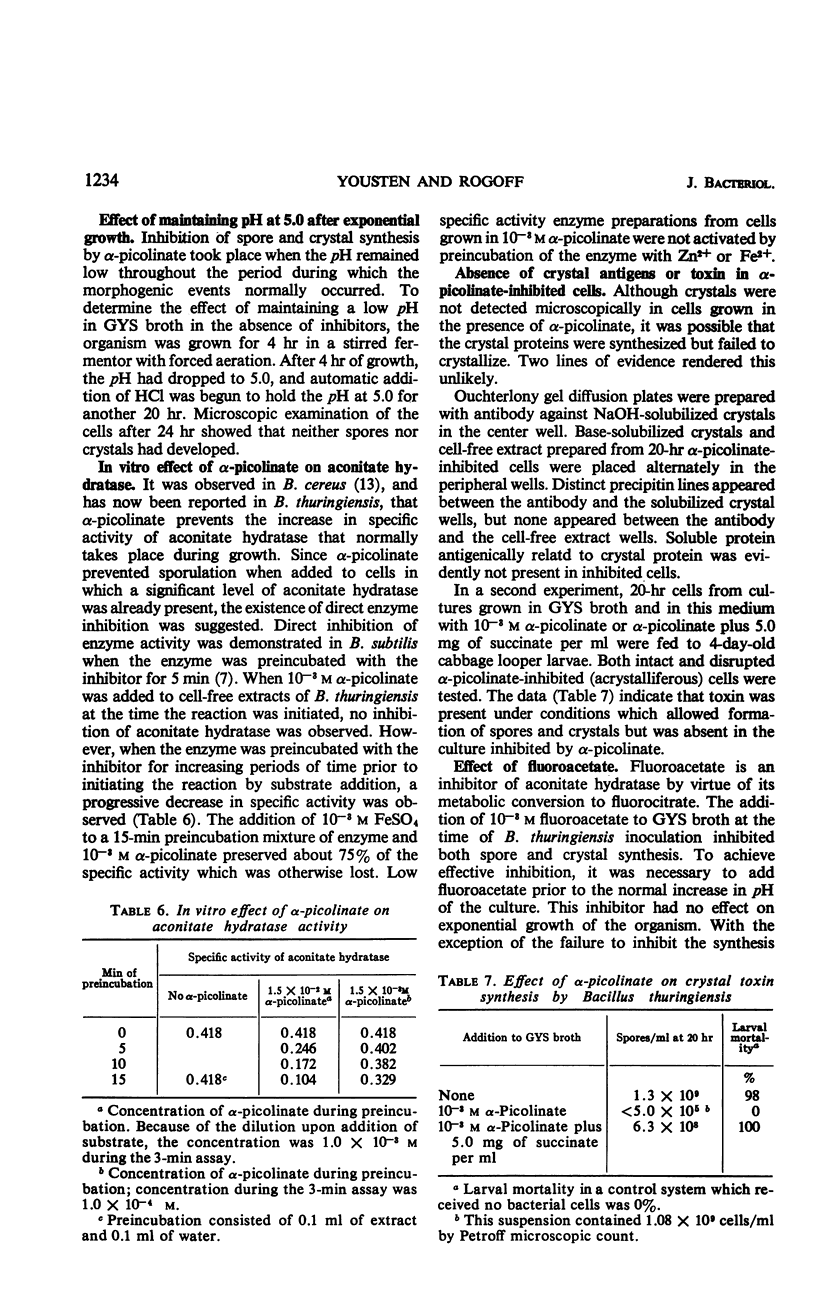
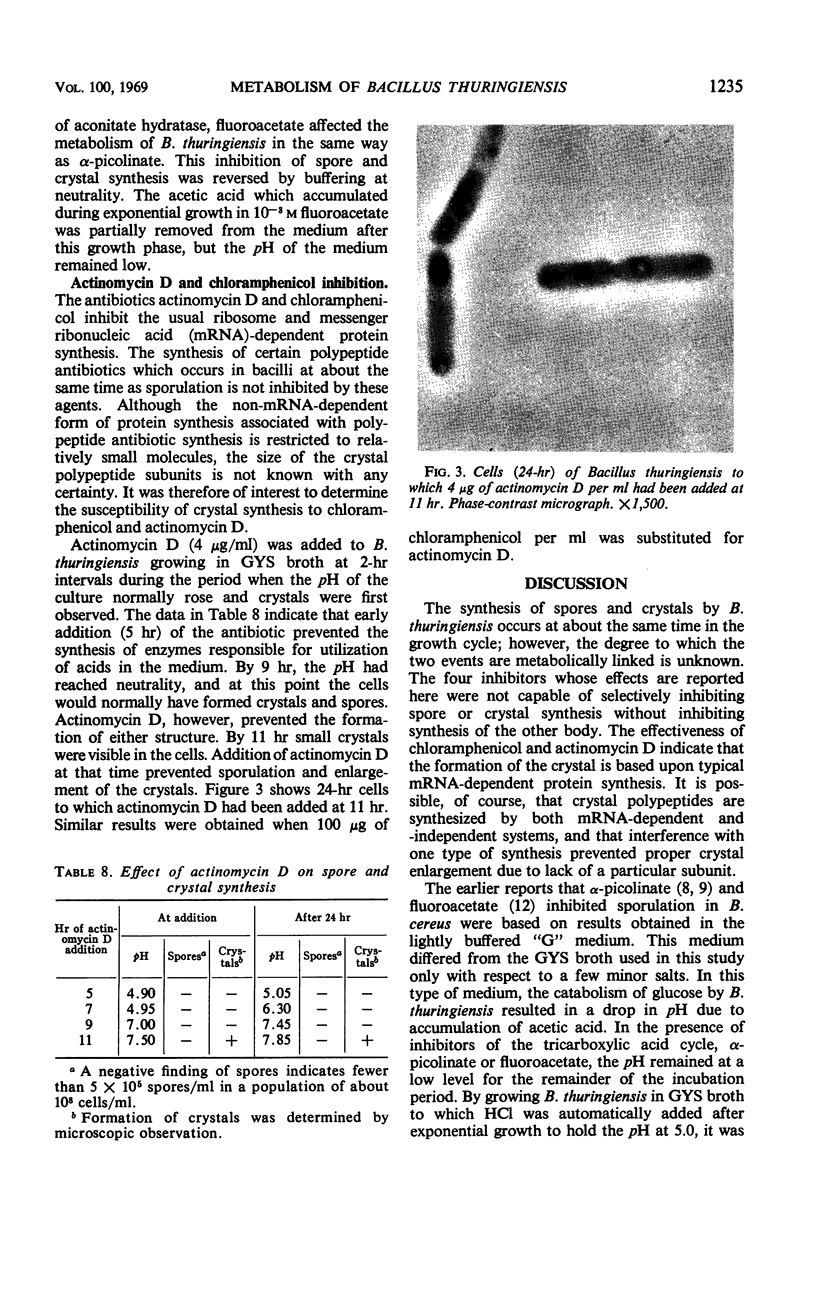
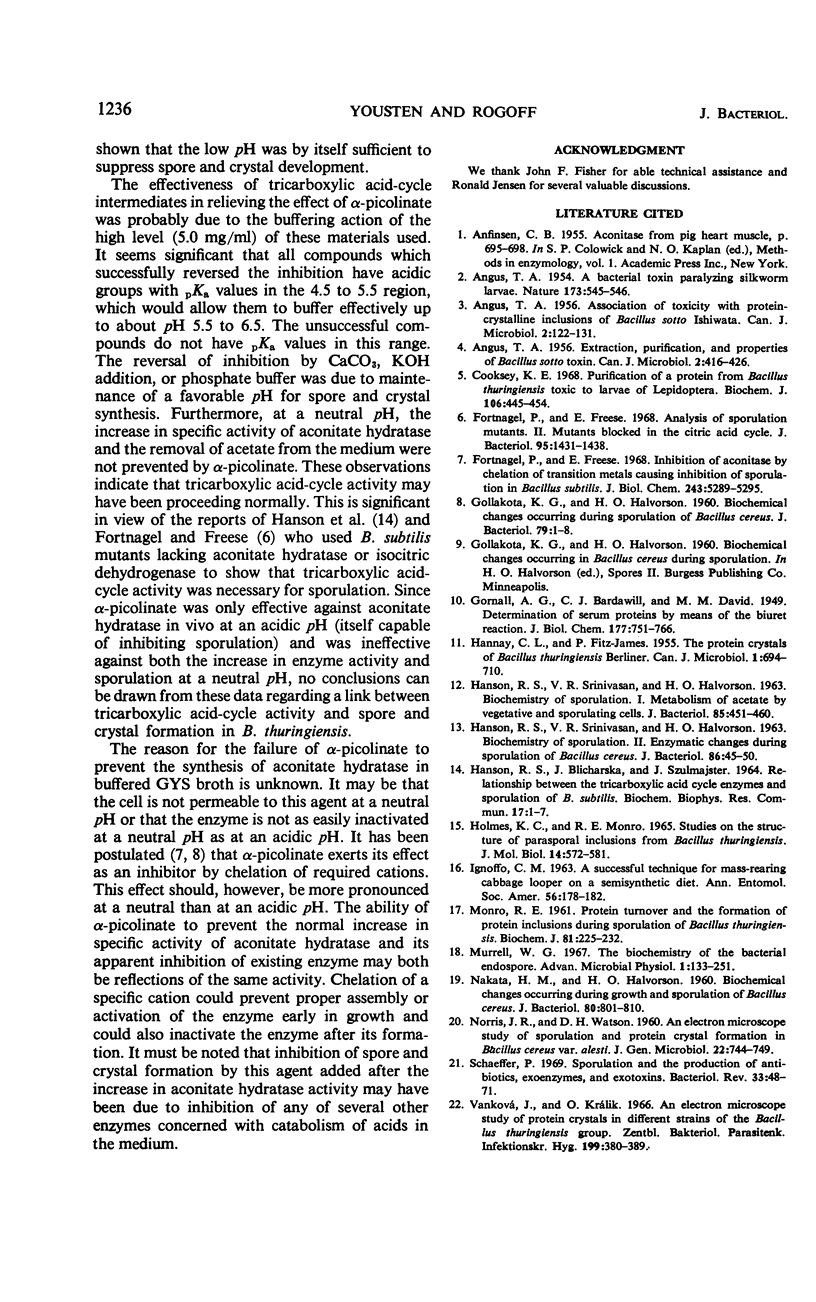
Images in this article
Selected References
These references are in PubMed. This may not be the complete list of references from this article.
- ANGUS T. A. A bacterial toxin paralysing silkworm larvae. Nature. 1954 Mar 20;173(4403):545–546. doi: 10.1038/173545a0. [DOI] [PubMed] [Google Scholar]
- ANGUS T. A. Association of toxicity with protein-crystalline inclusions of Bacillus sotto Ishiwata. Can J Microbiol. 1956 Apr;2(2):122–131. doi: 10.1139/m56-017. [DOI] [PubMed] [Google Scholar]
- ANGUS T. A. Extraction, purification, and properties of Bacillus sotto toxin. Can J Microbiol. 1956 Jun;2(4):416–426. doi: 10.1139/m56-049. [DOI] [PubMed] [Google Scholar]
- Cooksey K. E. Purification of a protein from Bacillus thuringiensis toxic to larvae of lepidoptera. Biochem J. 1968 Jan;106(2):445–454. doi: 10.1042/bj1060445. [DOI] [PMC free article] [PubMed] [Google Scholar]
- Fortnagel P., Freese E. Analysis of sporulation mutants. II. Mutants blocked in the citric acid cycle. J Bacteriol. 1968 Apr;95(4):1431–1438. doi: 10.1128/jb.95.4.1431-1438.1968. [DOI] [PMC free article] [PubMed] [Google Scholar]
- Fortnagel P., Freese E. Inhibition of aconitase by chelation of transition metals causing inhibition of sporulation in Bacillus subtilis. J Biol Chem. 1968 Oct 25;243(20):5289–5295. [PubMed] [Google Scholar]
- GOLLAKOTA K. G., HALVORSON H. O. Biochemical changes occurring during sporulation of Bacillus cereus. Inhibition of sporulation by alpha-picolinic acid. J Bacteriol. 1960 Jan;79:1–8. doi: 10.1128/jb.79.1.1-8.1960. [DOI] [PMC free article] [PubMed] [Google Scholar]
- HANNAY C. L., FITZ-JAMES P. The protein crystals of Bacillus thuringiensis Berliner. Can J Microbiol. 1955 Oct;1(8):694–710. doi: 10.1139/m55-083. [DOI] [PubMed] [Google Scholar]
- HANSON R. S., SRINIVASAN V. R., HALVORSON H. O. BIOCHEMISTRY OF SPORULATION. II. ENZYMATIC CHANGES DURING SPORULATION OF BACILLUS CEREUS. J Bacteriol. 1963 Jul;86:45–50. doi: 10.1128/jb.86.1.45-50.1963. [DOI] [PMC free article] [PubMed] [Google Scholar]
- HANSON R. S., SRINIVASAN V. R., HALVORSON H. O. Biochemistry of sporulation. I. Metabolism of acetate by vegetative and sporulating cells. J Bacteriol. 1963 Feb;85:451–460. doi: 10.1128/jb.85.2.451-460.1963. [DOI] [PMC free article] [PubMed] [Google Scholar]
- Holmes K. C., Monro R. E. Studies on the structure of parasporal inclusions from Bacillus thuringiensis. J Mol Biol. 1965 Dec;14(2):572–581. doi: 10.1016/s0022-2836(65)80205-4. [DOI] [PubMed] [Google Scholar]
- MONRO R. E. Protein turnover and the formation of protein inclusions during sporulation of Bacillus thuringiensis. Biochem J. 1961 Nov;81:225–232. doi: 10.1042/bj0810225. [DOI] [PMC free article] [PubMed] [Google Scholar]
- NAKATA H. M., HALVORSON H. O. Biochemical changes occurring during growth and sporulation of Bacillus cereus. J Bacteriol. 1960 Dec;80:801–810. doi: 10.1128/jb.80.6.801-810.1960. [DOI] [PMC free article] [PubMed] [Google Scholar]
- NORRIS J. R., WATSON D. H. An electron microscope study of sporulation and protein crystal formation in Bacillus cereus var. alesti. J Gen Microbiol. 1960 Jun;22:744–749. doi: 10.1099/00221287-22-3-744. [DOI] [PubMed] [Google Scholar]
- Schaeffer P. Sporulation and the production of antibiotics, exoenzymes, and exotonins. Bacteriol Rev. 1969 Mar;33(1):48–71. doi: 10.1128/br.33.1.48-71.1969. [DOI] [PMC free article] [PubMed] [Google Scholar]



